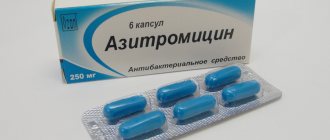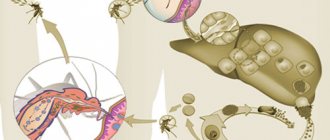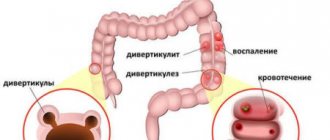In 1937, research was carried out regarding Japanese encephalitis. It was then that there was an epidemic outbreak and for the first time West Nile fever was detected in a person’s blood. The disease is caused by a mosquito bite. In the article we will look at what this disease is, how it is dangerous for humans, and what preventive methods should be used.
How is West Nile fever diagnosed?
Diagnosis of this natural focal viral disease is quite problematic. In epidemic regions, any manifestation of influenza conditions observed in the summer and autumn can be mistaken for West Nile fever.
To avoid confusion with diagnosis, it is recommended that when making a diagnosis, rely strictly on the results of laboratory studies and tests. When outbreaks of the disease are observed in the region, based on clinical and epidemiological indications, the diagnosis is made with more certainty. For example:
- A person lives near focal outbreaks of the disease;
- He often goes out into nature and spends his holidays in places where there are a lot of mosquitoes near water bodies;
- The disease occurs after eating food contaminated with the virus;
- Using water collected from an open reservoir.
The causative agent of the disease can be isolated from blood fluid taken for laboratory analysis. It can also be detected in a patient by taking cerebrospinal fluid for a test during an acute period of the disease, starting from the fifth day of the incubation period.
During this same period, fever can be detected using PCR. To perform this test, a portion of cerebrospinal fluid or blood serum is taken from the patient. The sample is taken strictly with a syringe, then the liquid is placed in a sterile tube.
All medical instruments must be used for one-time use using antiseptic agents. It is recommended to store samples in a freezer at a temperature of -60-70C in a liquid nitrogen solution.
Classification of febrile conditions
Today, many methods are used to detect fever, the best one being ELISA. Using serological diagnostics, you can detect antibodies that are related to the IgM and IgG classes. The first type of strain is usually detected already 2-3 days after the onset of the disease; their titers become too active after 7-14 days.
To correctly carry out serological diagnosis, two doses are taken from the patient at once:
- The first sample is taken when a person has been sick for about a week;
- A second sample of the necessary liquids is taken 14-21 days after the first analysis.
The patient is diagnosed only when the doctor compares the results of both laboratory tests, since there are similarities with Q fever.
Diagnostics
Consultation with an infectious disease specialist is required. If there are symptoms of central nervous system damage, an examination by a neurologist is indicated; in case of rashes, an examination by a dermatovenerologist. A significant role in diagnosis is played by the collection of an epidemiological history with the obligatory clarification of episodes of visits to endemic zones in Russia and the world. Methods for laboratory and instrumental diagnosis of this fever include:
- Objective examination. Physically, hyperemia of the skin, rash, injection of scleral vessels, enlarged lymph nodes, liver and spleen, and granularity of the pharynx are determined. Decreased visual acuity, arterial hypotension, dullness of heart sounds, meningeal symptoms (stiff neck, Kernig's, Brudzinski's symptoms), diffuse neurological symptoms (decreased tendon reflexes, horizontal nystagmus, proboscis reflex, etc.) may be detected. In the presence of focal symptoms and signs of irritation of the meninges, a lumbar puncture is indicated with a macroscopic assessment of the transparency, color of the cerebrospinal fluid, and the rate of its flow.
- Laboratory research . In approximately 30% of cases, a blood test reveals leukopenia, less often lymphopenia, thrombocytopenia. Biochemical parameters are usually normal; a slight increase in the activity of AST, ALT, creatinine, and urea is possible. When examining the cerebrospinal fluid, the cerebrospinal fluid is transparent, colorless, there is pronounced lymphocytic pleocytosis, and a slight increase in protein content. The level of glucose and chlorides remains within normal limits. There are no specific changes in urine analysis; with prolonged fever, trace amounts of protein may be found.
- Identification of infectious agents . Isolation of the virus from the blood using PCR is possible as early as 4-9 days from the onset of the disease. In the cerebrospinal fluid, antibodies to pathogen antigens are determined using ELISA. The PCR method for searching for virus in cerebrospinal fluid is used less frequently due to low sensitivity and high specificity. There is the possibility of PCR detection of the pathogen in urine. ELISA for serological diagnosis is significant only when monitoring paired sera on days 1-8 and 14-21 of the disease and simultaneous testing for antibodies to other flaviviruses (to avoid cross-reactions). To establish the strain of the virus, genome sequencing is used, and when examining sectional material, immunohistochemical tests are prescribed.
- Radiation methods, ECG, EEG . For differential diagnosis, X-ray of the lungs, computed tomography, magnetic resonance imaging of the brain with contrast, and, if necessary, PET-CT are performed. The ECG may reveal signs of myocardial hypoxia and decreased atrioventricular conduction. When conducting an EEG, in 50-80% of cases there is a decrease in the activity of the affected areas of the brain. Ultrasound of the abdominal cavity can determine an increase in the size of the spleen and liver; It is mandatory to examine the lymph nodes, thyroid gland, retroperitoneum and pelvis.
Differential diagnosis is carried out with listeriosis, tick-borne encephalitis, ARVI, influenza, tuberculosis, other hemorrhagic fevers (yellow, Lassa, Ebola, chikungunya, Marburg, Rift Valley, Crimean, HFRS), leptospirosis, sepsis, cerebral toxoplasmosis, HIV encephalitis, meningitis occassional infection, psittacosis, herpetic infection, acute lymphocytic choriomeningitis, Japanese encephalitis, enterovirus infection, syphilis, cysticercosis, prion diseases. Possible causes of such a symptom complex may include oncological diseases of the blood, the onset of diffuse connective tissue diseases, thyrotoxicosis, head injuries, hemorrhagic strokes, cerebral infarctions, and malignant neoplasms of the central nervous system.
Differential diagnosis of the disease
- How is West Nile fever different from the flu?
This type of diagnosis can be carried out depending on the manifestations and clinical form of the disease. West Nile fever has its own differences from influenza manifestations. Let's look at them:
- There are no signs of laryngeal tracheitis;
- The duration of a febrile state usually does not exceed 4-5 days;
- The disease differs from ARVI in that there are no catarrhal manifestations in the upper respiratory tract;
- But when West Nile fever intensifies, intoxication of the body is pronounced;
- Differences between West Nile fever and meningitis
- The disease differs from the enteroviral meningitis form in the duration of the febrile period;
- The patient experiences rapid intoxication due to pleocytosis;
- Laboratory testing of cerebrospinal fluid is quite slow;
- How is West Nile fever different from herpes encephalitis?
This is the most difficult of all diagnostic tests to detect fever in humans:
- If, against the background of a febrile state, a complication occurs in the form of herpetic encephalitis, then the patient may have a sudden convulsive attack and subsequently a coma usually occurs. In this case, differentiated diagnosis is made based on the tests performed;
- To do this, a portion of cerebrospinal fluid and blood is taken from the patient, and then examined using immunological techniques. The patient also undergoes a tomogram and MRI of the brain.
Popular Main foci of infection Tularemia, prevention and treatment
- Differences between West Nile fever and tuberculous meningitis
The difference between a febrile illness and meningitis developed in tuberculosis is that when the nerve endings are damaged in patients, the primary symptoms appear much earlier, on about 3-5 days.
Epidemiology
The reservoir and sources of infection are wild and domestic birds, rodents, bats, mosquitoes, ticks.
The transmission mechanism is transmissible; the disease is transmitted by mosquitoes of the genus Culex, as well as argasid and ixodid ticks.
People's natural sensitivity is high. Post-infectious immunity is intense and persistent.
Basic epidemiological signs. The disease is endemic in many countries in Asia, Europe, and Africa. Hundreds of cases of fever have been described in Israel and South Africa. The most significant African epidemic (about 3 thousand cases) was noted in the Cape province after heavy rains in 1974. Other outbreaks were observed in Algeria, Azerbaijan, the Central African Republic, Zaire, Egypt, Ethiopia, India, Nigeria, Pakistan, Senegal, Sudan , Romania, Czech Republic, etc. In 1999, an outbreak of fever was noted in the Volgograd region (380 people fell ill) with laboratory confirmation of the disease. Virus antigens were detected in selectively captured Culex mosquitoes and ticks. The risk area for West Nile fever is the Mediterranean basin, where birds fly from Africa. The disease has a distinct seasonality - late summer and autumn. Mostly rural residents are affected, although in France, where the disease is known as “duck fever,” urban residents who come to hunt in the Rhone Valley get sick. Young people are more likely to get sick. There are known cases of laboratory contamination.
Clinical guidelines for West Nile fever
After a mosquito bite, the pathogen enters the human circulatory system. Moving through the bloodstream, it enters the tissue of the lymph nodes. Through its actions, the viral infection affects capillary vessels, where it then replicates in the endothelium.
Due to the pathogenic effects of harmful microorganisms on the body, the following occurs:
- Damage to neurons, which is what causes the subsequent manifestation of neurological symptoms in the patient;
- Due to damage to the capillaries in the brain, edema and swelling of the soft membrane develops;
- Locally located manifestations related to hemorrhagic syndrome occur.
In all clinical forms, West Nile fever is accompanied by body heat up to 38-40C. The duration of high fever is either 1-2 days, or in severe cases – up to 14-21 days.
Classification
Clinical systematization involves division into groups taking into account the presence of certain manifestations of fever. A three-wave course of the disease is possible with a consistent predominance of damage to the brain and heart, and inflammatory phenomena in the respiratory tract. It is believed that neuroinvasive forms account for up to 50% of clinically significant cases of infection. Of practical importance, taking into account the need for therapeutic measures, is a classification that includes two forms:
- Asymptomatic. According to WHO, in 80% of cases the pathology occurs without any manifestations and can only be detected retrospectively in the presence of antibodies to a specific strain of the pathogen.
- Manifest. It is divided into West Nile fever with involvement of the central nervous system (meningitis, meningoencephalitis) and influenza-like form. Among immunocompetent individuals, the latter predominates. Neuroinvasive symptoms may include chorioretinitis, occlusive vasculitis, and optic neuritis.
Treatment of fever
If a patient’s temperature rises rapidly and exceeds 40C, then mandatory hospitalization in a medical facility is required. Also, when observing general cerebral symptoms or there are manifestations of meningitis against the background of West Nile fever.
There is no effective treatment to kill the fever virus yet. Treatment is mainly aimed at eliminating symptoms, and immunomodulatory therapy (interferon Amexin) is also carried out. The basis of treatment is pathogenetic procedures syndromic. Let's consider what procedures medical therapy includes:
- Treatment is aimed at eliminating swelling of the soft membranes of the brain, which determine the severity of the disease, as well as the expected outcome;
- Preventive measures are taken, as well as treatment of all abnormalities and complications associated with external respiration;
- Treatment of complications observed in the functioning of the cardiovascular system;
- It is necessary to significantly reduce the manifestation of seizures and hyperthermic syndrome.
To relieve symptoms, many antiviral drugs have not given the expected results, so only symptomatic treatment is carried out:
- If the patient has high cranial pressure, he is prescribed Furosemide, as well as potassium-containing drugs. Or Veroshpiron, since it is milder in action, and besides, it is a non-potassium-saving agent;
- For swelling of the soft membrane of the brain, the patient is given Furosemide with Mannitol. With rapid progression of edema, Dexamethasone is also prescribed as an additional effect;
- If there is a large loss of fluid from the body, it is necessary to administer liquid solutions in the form of a dropper. This can be a colloidal solution of Albumin or intravenous polyionic liquid Trisol. Dilute them with water in a ratio of 2:1;
- In case of hypoxia, the patient observes frequent shortness of breath, generalized convulsions, hypocapnia or coma, inhalations with the addition of oxygen are prescribed;
- To relieve the symptoms of a convulsive state, the patient takes Seduxen;
- Antibacterial drugs are prescribed if the patient develops a secondary bacterial infection;
- Vitamin complexes and microelements.
Patients with manifestations of encephalitis should be treated in the intensive care unit of a medical institution. If problems are observed in the respiratory system, the patient is transferred to artificial ventilation.
The duration of treatment therapy can be 7-10 days. If side effects from the nervous system are observed, treatment may take about a month. After the end of the hospital stay, the patient is transferred under dispensary observation.
Treatment
So far, scientists have not been able to develop drugs for the etiotropic treatment of MN fever. The patient is advised to remain in bed and take symptomatic medications.
The following drugs may be prescribed as drug therapy:
- interferon inducers;
- vitamin preparations;
- diuretics;
- detoxification drugs for intravenous infusion;
- analgesics;
- anticonvulsants;
- antihypoxants;
- sedatives;
- glucocorticoid hormones.
Some patients with the neuroinvasive form are prescribed inhalation of humidified oxygen and prophylactic treatment aimed at preventing secondary infections.
All patients with MN fever are advised to drink more fluids and take easily digestible, fortified foods.
Consequences and complications
Many forms of this natural focal disease most often have either mild or moderate severity. The only exception here may be the meningoencephalitis form, in some cases it leads to death. A form similar to influenza, asymptomatic and meningeal, ends with a quick recovery.
Popular Diagnosis and treatment of meningococcal infection in a child
After experiencing a fever, some complications and side effects are possible. Let's get acquainted with them:
- Muscle tremors that persist for some time;
- Paresis of the limbs, as well as the endings of the nerve roots;
- Chronic fatigue. By the way, it lasts even after the person has fully recovered.
Each of us may well encounter this viral disease, but this does not mean that after a mosquito bite, any of its forms may appear. Even if primary symptoms are observed, West Nile fever usually goes away without any particular consequences.
Symptoms
West Nile fever (symptoms of the disease can easily be confused with a common ARVI) is a disease that, from the first days of its development, is accompanied by the manifestation of the following symptoms:
- attacks of severe headache and dizziness;
- increase in body temperature to 38-40 degrees Celsius;
- general weakness, aches in joints and bones;
- hypertonicity of the muscular system (pain and tingling may also be felt in the calf muscles);
- profuse sweating, chills and fever;
- swelling of the joints;
- a feeling of pain in the eyeballs, as well as in the bone tissue, which is located in the circumference of the eye sockets;
- inflammation and hyperemia of the mucous membrane of the palate and larynx;
- enlargement of the submandibular, axillary and inguinal lymph nodes, which indicates an acute immune reaction of the body (during palpation of the lymph nodes the patient feels a sharp burning pain);
- decreased blood pressure and disruption of the rhythmic activity of the heart (the ECG result shows that myocardial tissue suffers from systemic hypoxia);
West Nile fever. Symptoms
- enlargement of liver and spleen tissue, which is accompanied by impaired digestive function;
- cutting pain in the intestinal area, which intensifies during palpation of the abdominal cavity;
- complete or partial loss of appetite;
- confusion, hallucinations and delusions (the manifestation of these symptoms is characteristic of a neuroinvasive type of disease).
To stabilize the patient’s condition and suppress these symptoms, medications are used that support the vitality of the body and stimulate the functioning of the immune system.
Symptoms of fever
From the time the pathogen enters the human body until the appearance of primary symptoms, one week usually passes, in some cases it can take up to three weeks. This time is the incubation period.
The parasite, along with a mosquito bite, enters the body, where it begins to conduct its life activities and rapidly multiply. As a result of these actions, primary replication and bacteremia develop in organs and vessels.
As soon as the concentration of pathogenic microorganisms increases to the maximum, they emerge from the donor organs, where they multiplied, and their primary replication occurred.
Pathogenesis
West Nile fever enters the body of a blood-sucking insect along with the blood after it bites an infected bird. After this, the pathogen is concentrated in the salivary glands of the tick or mosquito itself, from where, when biting a person, it safely moves into the bloodstream.
After the virus enters the human blood, the clinical picture of the disease begins, that is, initial symptoms develop, which rapidly worsen. In children, the clinical picture is always more severe than in adults, since the immune system is too weak at this age.
How is West Nile fever transmitted?
Clinical manifestations
When secondary bacteremia occurs, the primary symptoms of the disease begin to appear. Let's take a look at some of the main symptoms of fever:
- The onset of the disease is acute;
- A rapid increase in temperature to 38-40C in just a few hours;
- Observation of general intoxication symptoms (gag reflex, nausea);
- Severe chills, general malaise;
- Localized soreness in the forehead, eyeballs;
- Palpable soreness of the muscle surface in the lumbar and cervical region;
- Arthralgia.
Further diagnosis of symptoms most often depends on the type of viral infection affecting. Although, usually when infected with West Nile fever, the pathogen first attacks important organs: the soft membrane of the brain, liver, kidneys.
Let's consider the most common symptoms when infected with this natural focal infection:
- If infection occurs with a pathogen that was dominant in the 90s. last century, then the patient may initially experience conjunctivitis, body rashes, pharyngitis, vomiting symptoms, hepatolienal syndrome. “Old” strains are usually benign;
- If a person enters the body with a more “modern” strain, then the development of the disease will follow a sadder scenario. Clinical symptoms have more variations, since everything here depends on multiple forms of fever;
- The subclinical form of fever does not have any special clinical manifestations. The diagnosis here is made based on the results of a screening study, for example, if at least one of their titers is increased by 4-5 times, then this indicates the presence of a disease in the body;
- With the influenza-like type of illness, people do not often visit doctors, so it is the least studied. Most often, this form is mistaken for a cold, since the primary symptoms are quite similar. Health deterioration occurs within 3-5 days. In this case, the patient develops meningitis symptoms, a rapid increase in body temperature, radicular pain, and tremor. This condition lasts about 10 days;
- In terms of general brain symptoms, the meningitis form of the disease occupies a leading place. Focal symptoms are also added here - nystagmus, pyramidal signs. Muscle tremors and lethargy are felt.
How do you feel about mandatory vaccination?
- Positively, it prevents many diseases. 62%, 2162 votes
2162 votes 62%2162 votes - 62% of all votes
- Negatively, these are all government schemes to make it easier to manage us. 25%, 863 votes
863 votes 25%
863 votes - 25% of all votes
- Neutral, I don’t think it has any effect on my health. 13%, 465 votes
465 votes 13%
465 votes - 13% of all votes
Total votes: 3490
Voted: 3473
January 17, 2018
×
You or from your IP have already voted.










